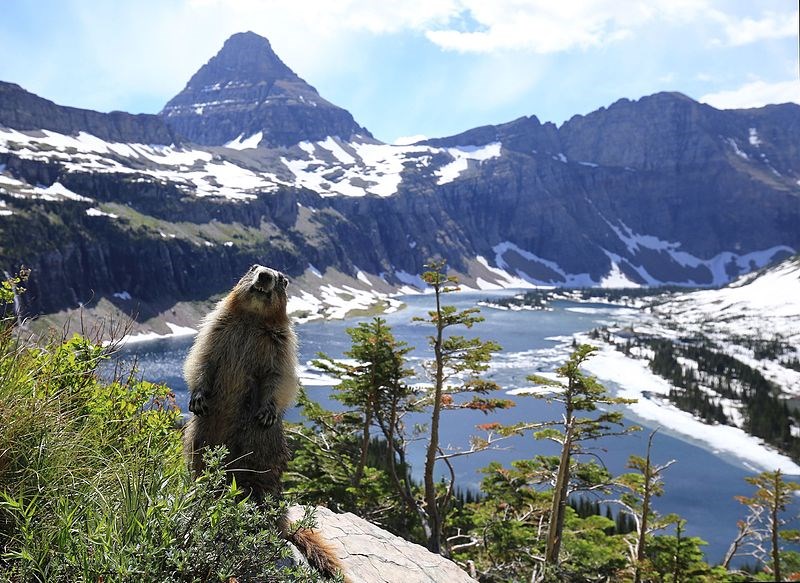Exactly a week ago today I was sitting on the patio of Many Glaciers Hotel in Glacier National Park, Montana, gazing out at a bright green lake ringed by snow capped mountains as far as the eye could see. The sun, low in the sky, was throwing long rays creating a warm, early-evening glow. At one end of the patio, people were abuzz, trying to get a glimpse of a bear foraging for food on a hillside.
This is how we ended a spectacular eight-hour hike to Grinnel Glacier where we’d followed a trail that rises to an elevation of 6,515 feet, winding around mountains, skirting lakes and finally coming to an actual glacier and brilliant turquoise lake, complete with icebergs bobbing around.
As we sat on our Adirondack chairs nursing a well-deserved beer before heading back to our campsite, we started talking to a guy from Michigan about our various hikes. We were comparing notes when he said, “Yah, I wanted to see these glaciers before they’re gone.”
This wasn’t the first time we’d heard this comment. On a shuttle bus just the day before, we talked to a woman from Minneapolis who said the same thing. And certainly reading the park exhibits and looking at the past and present pictures of the various glaciers throughout the park, it’s screamingly obvious that within our lifetimes, Glacier National Park may have to be renamed as there won’t be any glaciers left. One graph shows the natural cycles of Earth’s warming and cooling over thousands of years, but when you get to today, the line spikes off the chart.
But here’s the sticking point.
As we sit in awe of this natural beauty and feel a sense of foreboding at the thought of its destruction, the fact is our Michigan friend drove more than 1,800 kilometres to experience these vistas; the Minneapolis woman about 1,200, and us around 900 -- one way. I don’t even want to think about how much CO2 that translates into.
I don’t regret going, but I do think it’s worth pausing to connect the dots, to recognize how we are contributing to the demise of this natural wonder we claim to cherish.
Last week Kwantlen Polytechnic University hosted a two-day forum featuring keynote speaker Dr. William Rees, the UBC professor who coined the concept “ecological footprint.” He opened the forum with a truly dire assessment of where we are in terms of climate change. But the rest of the conference was about what we can do. Our feature in today’s paper discusses some of those ideas. (Pages 21-25)
Back to the glaciers, I don’t believe the answer is to simply stay home. We could have looked for a greener way to get there, but there isn’t one. The point is, focusing on individual choices is only part of the solution. We’re all operating within a larger system that only affords certain options; low-income people simply can’t buy $5 bunches of organic kale, as one speaker said. Colin Dring also talked about class, culture and the commodification of food, noting that the interests of profit don’t always align with the interests of the planet.
I’d say that’s a thought worth chewing on, although in a profit-motivated society, it may be a hard concept to digest.



